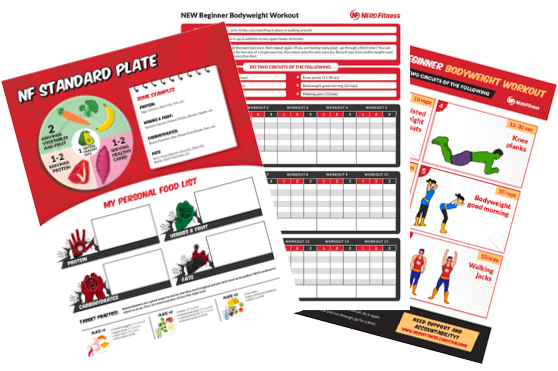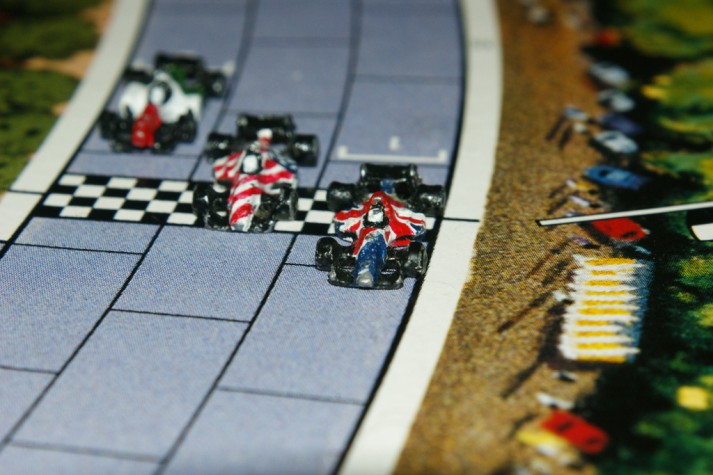
When it comes to strength training, or even exercise in general, getting consistently better and increasing the challenge is the key to success.
If you repeat the same workout day after day, month after month, your body will adapt and learn to become more efficient at that workout, burning less calories and making less progress.
So, in order for us to continually force our bodies to adapt and grow stronger, we must consistently introduce a slightly increased challenge every day.
Today, we’re going to cover the science behind all of this, why setting a new record is important for your mental momentum, and HOW you can set a new record every single day.
Why doing the same thing over and over doesn’t work

Normally, if you need to lose weight you need to increase your energy expenditure. So, you just “move more” … right?
After all, aren’t you taught that in order to lose weight you need to “move more and eat less?”
Believe it or not, “moving more” is a bit more complex than you’d think.
As pointed out in The New York Times, exercising doesn’t always lead to increased energy expenditure.
Professor Pontzer of Hunter College followed an INCREDIBLY active hunter gatherer tribe, and learned that they burn the same number of calories as a typical american, despite the differences in the amount of activity. Essentially, their bodies adapted to the stress and learned to burn less calories in other ways to increase efficiency:
“Energy expenditure is consistent across a broad range of lifestyles and cultures. Of course, if we push our bodies hard enough, we can increase our energy expenditure, at least in the short term. But our bodies are complex, dynamic machines, shaped over millions of years of evolution in environments where resources were usually limited; our bodies adapt to our daily routines and find ways to keep overall energy expenditure in check.”
So, if you do 3 sets of 10 push ups every day, your body will get REALLY good at doing 3 sets of 10 push ups, becoming more efficient (but not necessarily stronger) each time.
Just like killing rats/spiders in World of Warcraft becomes less and less lucrative as you level up, so too does doing the same routine over and over:
- In order to level up in a game, you need to fight tougher bad guys.
- In order to level up in the game of life, you need to increase the challenge of your workout.
Understanding progressive overload

So we know that we can’t do the exact SAME thing forever and expect to level up to 50. We need to challenge ourselves.
“Progressive overload” is the term we use to describe this challenge – we are overloading our current capabilities, slowly but surely.
As NSCA’s Performance Training Journal explains:
“Without overload there is no adaptation by the body. Neuromuscular adaption occurs first, followed by increases in muscle and connective tissue, and bone mass. Proper conditioning methods will lead to physiological advancement as well. Depending on the training goals, improvements in lactic acid tolerance, lactate threshold, maximum aerobic power, and a variety of cardiovascular functions could be the appropriate responses.”
Our bodies will improve in all SORTS of ways, from stronger muscles to an increased performance of your central nervousness system. All of this is only possible through a stimulus, or what normal people call “doing something that’s challenging.”
As we apply a stimulus our bodies respond, making improvements in all of the above areas.
So, the solution is simple, right? Just increase the challenge of each exercise, every day, forever. Level 50 in no time…right?
Unfortunately…
linear progress can’t go on forever
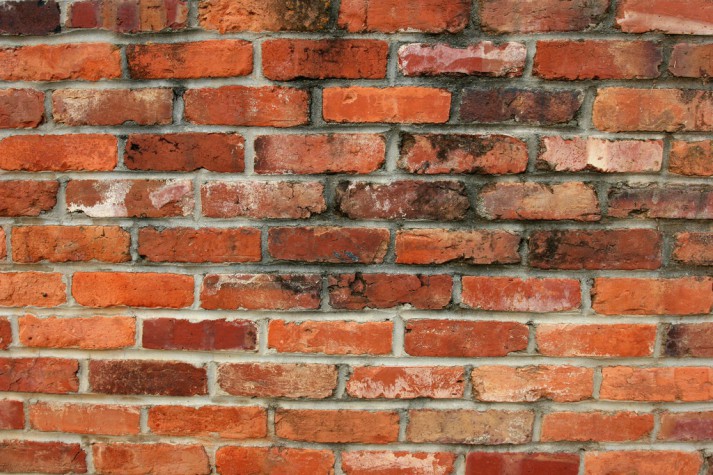
If you’re familiar with the program Starting Strength or Stronglifts, then you understand what linear progression is.
The goal is to start each powerlifting exercise (like squats) with just the bar, and then add weight to the bar each time you work out.
So, the squat portion of your beginner workout would look something like:
- Workout 1: 3 sets of 5 reps of 45 lbs. (the bar)
- Workout 2: 3 sets of 5 reps of 50 lbs.
- Workout 3: 3 sets of 5 reps of 55 lbs.
- Workout 4: 3 sets of 5 reps of 60 lbs.
- Workout 5: 3 sets of 5 reps of 65 lbs.
- Workout 6: 3 sets of 5 reps of 70 lbs.
Although you are starting with a very light weight, you teach your body to adapt and perfect the squat movement. Then, each week you are tacking on 5 lbs. Doesn’t seem like much…but if you are starting with the bar, and adding 5 lbs per week, by the end of a year you would be squatting 305 lbs. if you could maintain that pace.
305 lbs is a lot of weight. For reference, I would give my left leg to squat 305 lbs. Then I would regret the fact that I gave away a leg to squat more weight, but that’s beside the point.
When you follow a routine like this, you’re going to be able to make very rapid increases in what you lift very quickly when you start out each and every week.
For YEARS, this is the plan I would follow. A rigid structure of sets and reps, and climbing slightly higher and higher over the course of months as I tried to increase my max lifts.
The natural progression in these plans are great! Eventually however, our “newb gains” come to an end and progress slows down. After that, we need to figure out a way to set a new personal record with each workout…when linear progress isn’t so easy.
I now always leave my workout feeling like a lion, as I always set a new personal record with each workout.
how clash of clans will improve your strength training
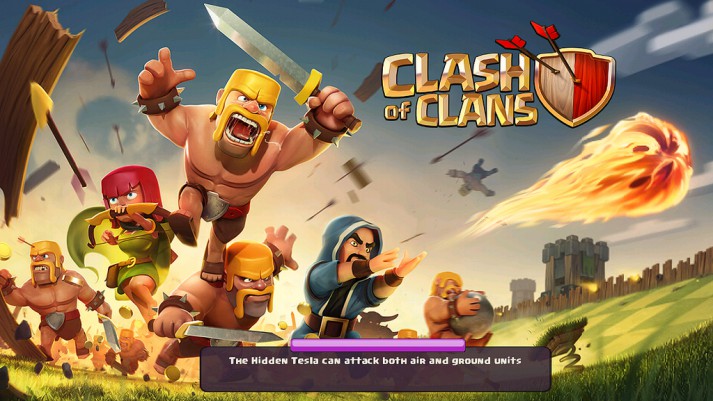
If you don’t play Clash of Clans, I envy all of your free time. In any case, I promise this will make sense if you’ve ever played any video game.
In Clash of Clans (an interactive PVP tower defense game), your goal is to level up your village, upgrade your defenses, upgrade your armies, and then go attack other villages to gain more resources to continue the whole process.
When you start, the upgrades come fast and easy (like with strength training).
However, like with most games, sometimes you get to a point where certain features aren’t yet “unlocked.” I was so eager to get a certain army unit that I skipped ahead, past what my village was ready for and got the upgrades anyway. Because my village wasn’t ready, I got my ass kicked in almost every battle. Newb move, Kamb.
Since then, I’ve learned my lesson, and now only jump ahead when my village is upgraded and I’m ready to go to the next level of opponents.
It’s a much slower level of progression, but now I’m winning more battles all around, both on defense and on offense. I’m better prepared to handle the level of competition because I am consistently taking teeny tiny steps to upgrade rather than massive upgrades that come along with making the next big leap (upgrading my town hall).
The same is true for almost any role playing game: just because you’re the right level to enter a new zone doesn’t mean you’re ready – you can still max out your armor, you can still level up your spells, and you can still get more stat-increasing jewelry, giving you a much better chance to survive and thrive.
As with Clash of Clans, and RPGs, the slower but more consistent you can make your progress with training, the less likely you’re gonna end up in a situation where you get your ass kicked.
Here’s how to do this IRL.
Set a Personal Record every day
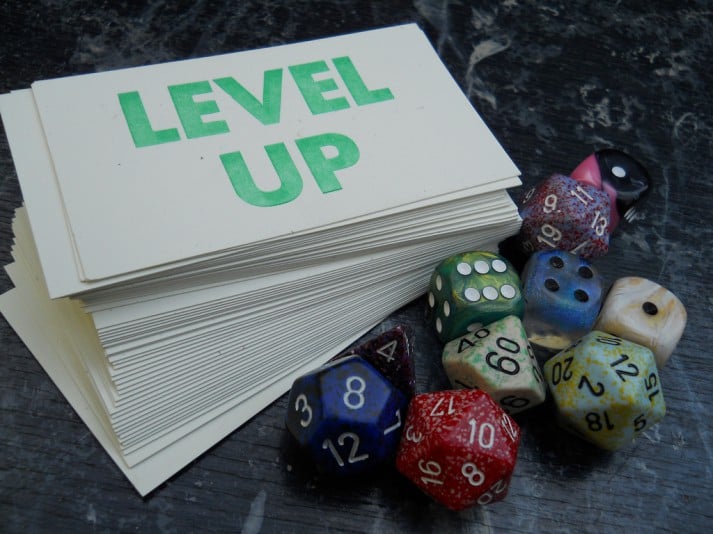
We’ve recently discussed how to break through the dreaded plateau.
In this nerd’s humble opinion, the best way to break out of a plateau…is to avoid them in the first place! They’re mentally draining, depressing, and can derail even the most determined rebel.
So, when linear progress isn’t possible any more, rather than adding 5 lbs. a week to the bar, stalling for a few weeks, and then trying to push through, the goal instead is to find a way to make smaller increments each week. Instead of climbing stairs with flat sections, or a roller coaster where you actually drop down:
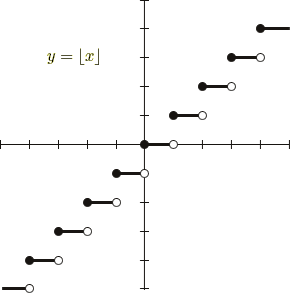

Instead, you want ride up a ramp, consistently improving:

Now, there are two big benefits to this approach:
- You don’t overload your body too much, but you consistently teach it to expert to have to lift more and more each week, so it begins to expect it and thus adapt by preparing by getting stronger and repairing properly.
- You don’t have those down days where you wonder if you’ve stalled out, or those days where you take steps backwards. You are consistently proving to yourself that you are stronger/better today than you were yesterday.
The goal is to increase the total capacity you lift each workout in SOME WAY. There are a few ways to do this:
- Lift more weight per rep than last time.
- Lift more reps with the same weight than last time.
- Lift more TOTAL weight for the workout than last workout.
- Lift the same number of reps, sets, and weight, but do so with less of a rest between sets.
- Lift with better form (e.g. a deeper squat, or more range of motion), or a harder variation.
As long as ONE of these metrics is higher than your previous workout, you have leveled up and grown stronger.
For example, here’s 4 of my workouts involving the overhead press:
- Workout 1: 5/5/5 x 95 lbs.
- Workout 2: 6/5/5 x 95 lbs.
- Workout 3: 6/6/5 x 95 lbs.
- Workout 4: 6/6/6 x 95 lbs.
Each week, I just added ONE additional rep to my workout. Then, in Workout 5 and 6, the process reset itself, but at a higher weight:
- Workout 5: 5/5/5 x 100 lbs.
- Workout 6: 6/5/5 x 100 lbs.
Although I moved less TOTAL weight around (week four total was 3x8x95 lbs = 1710 lbs, and week 5 was 3x5x100 = 1500 lbs), I picked up more weight per rep than before. I leveled up!
Let’s say I’m having a bad week; I might adjust by doing 8/8/8 x 75 lbs. Picking up less weight per rep, but doing more reps, and thus more total weight: (3x8x75 = lbs).
Be More Like a Turtle

You know the story of the tortoise and the hare?
Slow and steady wins the race.
It’s boring as hell, but when it comes to health and fitness….so freaking true. And turtles are cool. Ninja Turtles, Crush, The Zombie Turtle kid. Turtles are IN right now.
So, check your ego, and don’t do more. To borrow from Paul Rudd’s Character in Forgetting Sarah Marshall, “the less you do…the more you do”:
Forgetting Sarah Marshall Clip
The goal is to increase by the teeniest of tiniest fractions, each and every workout.
This is so tough to accomplish when you are just getting started, as it’s so much easier to throw a bunch of weight on and graduate and level up VERY quickly. This is when you get your ass kicked in Clash of Clans, RPGs, and in the gym.
What’s that you say? You don’t do weight training? THAT’S OKAY! (though you definitely should :):
“I’m a runner”: Keep track of your time. Run a few feet further than last time. Run the same distance in less time. Run lots of sprints (sprint link) instead of a long slow run.
“I only train with body weight exercises”: Awesome, I love body weight training. Increase your rep total by 1 each workout, then go WAY down in reps but increase the difficulty of the exercise:
- Workout 1: 10/10/9 regular push ups
- Workout 2: 10/10/10 regular push ups
- Workout 3: 5/5/5 feet elevated push ups
- Workout 4: 6/5/5 feet elevated push ups
I do yoga: Great! Stretch a teeny tiny bit farther (further?) in your next routine, and try to level up just ONE movement.
Slow, steady, consistent progress.
Today, I’m going to be deadlifting the most I’ve attempted in close to 4 years. It’s been a slow, steady climb over the past eight months, but each week the number has gone up in some way.
How about you?
In what teeny tiny way are you setting a new Personal Record today?
-Steve
###
photo source: Nicholas Petrone: Turtle, Darren Hester: Brick Wall, peddhapatai: repeat, Themeplus: Clash of Clans, FutUndBeidl: progressive, artnoose: level up, mathwords.com: stairgraph, Hartford Physics Wiki: rollercoaster graph, Xavier Bermeo: Growth Graph, Tim Ellis: Race Car


